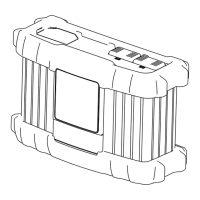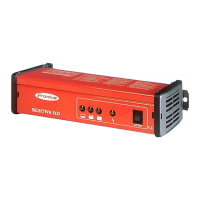154
Electrical tests
Ground conduc-
tor resistance
- The device to be tested must be safely isolated from the AC grid. The mains lead (L1,
L2, L3, N, PE) must not be connected. Follow the safety rules.
- The device to be tested must be safely isolated from the battery. The charger leads
must not be connected.
- No earthing connections must be present
- No additional options should be connected to the battery charging system
- The device must be isolated from the PC and other connections
1 Measuring device
2 Battery charging system
9 Measuring line
Example: measuring the ground conductor resistance
- The measurement is taken between the ground terminal of the device and every
touchable conductive part connected to the ground conductor.
- Should the original mains cable be in the battery charging system, the measurement
must be taken between the earthing of the mains cable and every touchable conduc-
tive part connected to the ground conductor. Move the mains cable to detect any line
breakage
- The resistance must not exceed 0.3 *)
*) These requirements comply with DIN VDE 0701-0702 and ÖVE/ÖNORM E8701-1. Also
refer to the applicable requirements and standards in your country.
Insulation resist-
ance
WARNING! An electric shock can be fatal. Some of the insulation resistance
measurements are taken under high voltage. The process must be completely
understood before starting the test. Observe the following safety precautions:
- Only perform the measurement if a ground conductor resistance test has
been carried out successfully
- Restrict access to the work area as far as possible
- Do not touch any other person while performing the test and take measures
to prevent other people touching any metallic surfaces
- A voltage is applied to the area to be tested each time that the insulation re-
sistance measuring device is switched on. The insulation resistance measur-
ing device must be fitted with an automatic self-discharge device.
- Wear suitable protective clothing/protective equipment while conducting the
test
- Ensure that the polarity is correct while conducting the insulation resistance
test to avoid unreliable test results
